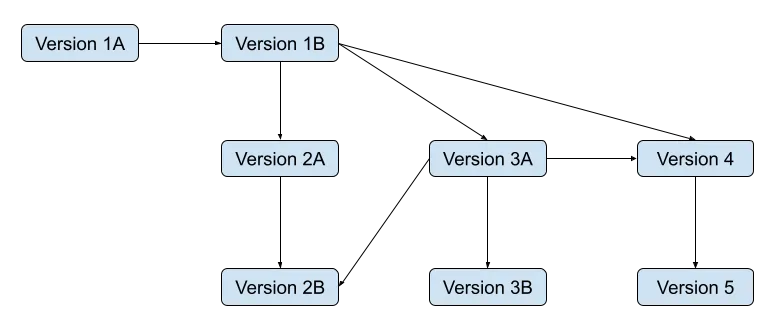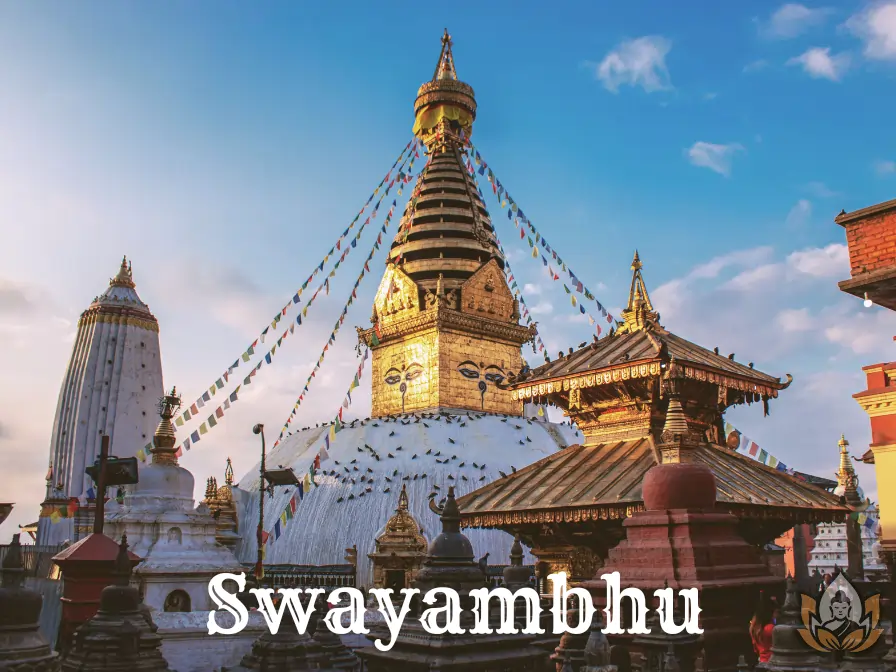The Ancient Chronicles of Swayambhu
Swayambhu Purana (also spelled as Svayambhu Purana or Swoyambhu Purana), in Sanskrit स्वयम्भू पुराण is one of the oldest Nepalese Buddhist Text – नेपाली बौद्ध ग्रन्थ chronicling the prehistoric legends of the Nepal Valley (present-day Kathmandu Valley) and the Swayambhu Dharmadhatu Chaitya, a sacred site for all Buddhists. The term Dharma signifies Buddhist law or doctrine, while Dhatu represents the elemental form or ultimate element. Together, Dharmadhatu embodies the ultimate essence of the Dharma. The term Chaitya refers to a Buddhist stupa.
According to legends, these stories were first narrated by Sakyamuni Buddha, born in Kapilavastu, an ancient kingdom in present-day Nepal, during the 6th century BCE.
After attaining enlightenment beneath the Bodhi tree in Bodh Gaya, India, Buddha traveled extensively with his disciples to spread the teachings of Buddha Dharma and visit sacred sites. During his journeys, the Buddha visited the Nepal Valley to honor the sacred site of Swayambhu. He traveled from Jetavana Mahavihara, a monastery thought to have been in present-day Lucknow, India. While in the Nepal valley, he stayed on Manjushri Hill, located at the western base of Swayambhu Hill in Kathmandu. This hill holds special significance as it is believed to be the abode of Manjushri Bodhisattva, who is credited with founding the settlement in the Nepal Valley.
The Great Lake and the Serpent Kings
The Swayambhu Purana presents a facinating narrative of the ancient Great Lake that once filled the Nepal Valley and the mythical Nagarajas or Serpent Kings. While the term Nagaraja literally translates to “Serpent King”, it symbolizes far more than zoological serpents. The Naga embodies a profound natural force linked to the Earth’s vitality, water elements, and phenomena such as rainfall. These serpentine beings are also associated with the fertility of plant life and the prosperity of humans and animals, not just in Nepal but across the world.
Through its vivid accounts, the Swayambhu Purana captures the interconnectedness of nature, spirituality, and human life, offering a timeless narrative cherished by Buddhists and revered by the inhabitants of the Nepal Valley.
The Buddha’s Discourse on Swayambhu’s Holiness
While the Lord Buddha was teaching about the sacredness of the Swayambhu Dharmadhatu, Maitreya Bodhisattva (Maitreya is future Buddha) requested him to explain its significance. Maitreya asked Buddha to share the ancient and legendary stories of Swayambhu Dharmadhatu, detailing why it is considered a holy site for all Buddhas and Bodhisattvas, its spiritual importance, and its renowned status among Buddhists.
In response, the Lord Buddha narrated the detailed history and legends of the Nepal Valley and Swayambhu Dharmadhatu, which were recorded in Swayambhu Purana. These stories describe the valley’s creation, transformation, the holiness of the Dharmadhatu, and the interconnectedness of life in the region.
Later, these stories were retold by Upagupta Bhiksu to Emperor Ashoka of India (274–237 BCE) at Kukkutarama Mahavihara, present-day in Patna, India. Upagupta Bhiksu had heard the accounts from his teacher, Sanavasa Bhiksu. Long after this, the stories were once again shared by Jayashri Bhiksu with his disciple Jinashri Bhiksu at Bodhi Mandapa in Bodh Gaya, present-day Bihar, India.
The Swayambhu Purana, the sacred Buddhist text of Nepal Valley, provides an interesting and popular account of the valley’s Great Lake, the Naga Kings (Serpent Kings), and the spiritual essence of Swayambhu Dharmadhatu. Though the term “Naga King” literally translates to “Serpent King”, it does not refer to zoological serpents. Instead, the Nagas symbolize natural forces associated with the Earth, water, rainfall, fertility, and the prosperity of all plant, human, and animal life in Nepal and beyond.
The text offers profound insights into the spiritual and natural history of the region, emphasizing the interconnectedness of nature, human life, and divine forces. It remains a cornerstone of Buddhist heritage, revered by the people of the Nepal Valley and beyond.
The Sequence of Narration of Swayambhu Purana
The stories and teachings of the Swayambhu Purana are believed to have been narrated and transmitted in the following sequence, beginning with Lord Shakyamuni Buddha:
- Shakyamuni Buddha → Maitreya
- Sanavasa Bhikshu → Upagupta Bhikshu
- Upagupta Bhikshu → King Ashoka
- Jayashri Bhikshu → Jinashri Bhikshu
This historical progression highlights the Swayambhu Purana as a deeply revered and sacred text for the Buddhist community in Nepal and beyond, preserving its spiritual and cultural significance through generations.
Different Versions of Swayambhu Purana
The Swayambhu Purana, a sacred text detailing the origin and mythology of the Swayambhu Stupa and the Kathmandu Valley, exists in several versions. These variations reflect differences in language, chapter count, and the number of verses. Below is a summary of the notable versions:
Version 1A
This is a concise Sanskrit version consisting of 8 chapters and 410 verses. It provides a brief yet significant account of the mythology and history associated with the Swayambhu Stupa.
Version 1B
Another Sanskrit version, Version 1B, also contains 8 chapters but is even shorter, with only 280 verses. It appears to be an abridged form of Version 1A, likely created for easier recitation or reference.
Version 2A
Version 2A is an expansive Sanskrit version with 8 chapters and an impressive 4100 verses. It includes more detailed descriptions and elaborations compared to Version 1A, making it a comprehensive rendition of the text.
Version 2B
An even more elaborate Sanskrit version, Version 2B, also spans 8 chapters but contains 4600 verses. This extended form includes additional stories and interpretations, adding depth to the narrative.
Version 3A
This version features 10 chapters and 1750 verses, written in Sanskrit. It introduces additional content and narratives, offering a broader perspective on the mythology while retaining a manageable length.
Version 3B
Version 3B is a translation of Version 3A into the Newari language, with the same 10 chapters and 1750 verses. This version holds special significance for the Newar community, who have a deep cultural and religious connection to the Swayambhu Stupa.
Version 4
Version 4, written in Sanskrit, expands further with 12 chapters and 3600 verses. It delves into greater detail, adding richness to the mythology and historical context of the Kathmandu Valley.
Version 5
The most extensive version, Version 5, is a Sanskrit text comprising 13 chapters and 5380 verses. It serves as the ultimate elaboration of the Swayambhu Purana, encompassing an exhaustive account of its legends, teachings, and cultural significance.
The various versions of the Swayambhu Purana demonstrate its evolution over time, catering to different audiences and purposes. From concise summaries to extensive elaborations in both Sanskrit and Newari, these versions reflect the enduring importance of this text in preserving and sharing the mythology of the Swayambhu Stupa and the Kathmandu Valley.
Note: This book is based on mix of Swayambhu Purana Version 3A and early versions and focuses on the mythological history of the Nepal Valley.

Swayambhu Purana – Table of Contents
Chapter 2: Vipaswi Tathagata: Origin of Swayambhu »

